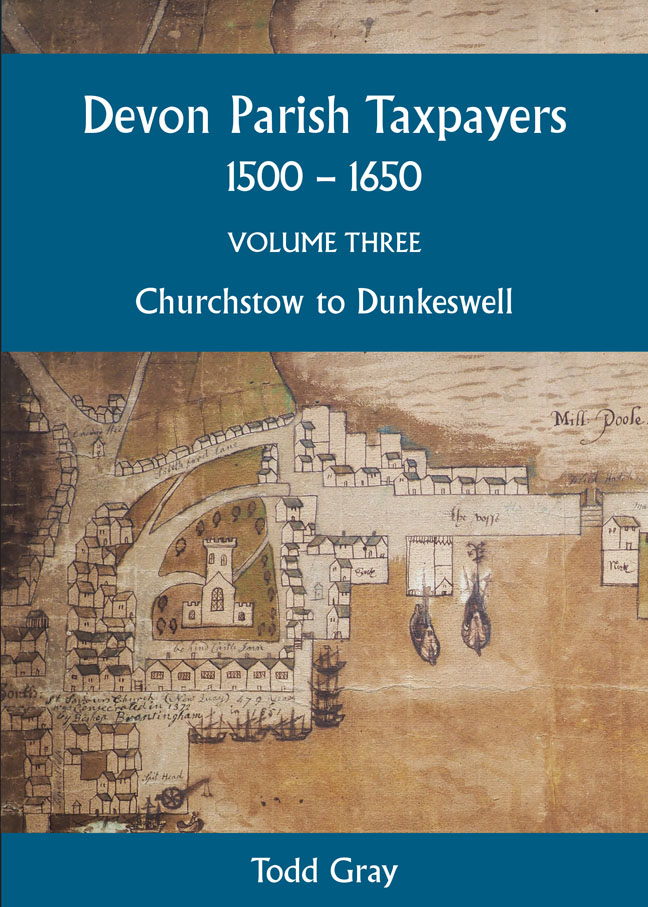Book contents
- Frontmatter
- Dedication
- Contents
- List of Illustrations
- Preface
- Introduction
- Editorial Conventions
- The Lists
- Appendix 1 Letter regarding financing church repairs at Colyton, 1 June 1606
- Appendix 2 Letter from to the churchwardens and overseers of the poor of St Saviour, Dartmouth, 6 March 1610
- Appendix 3 Dartmouth electors, 1626
- Appendix 4 Account of the head wardens of Dean Prior, 1580
- Index
- Devon and Cornwall Record Society
Dartmouth, St Petrox (Southtown), Poor Rates, 1604, 1609, 1611, 1613 & 1619; Hospital Rates, 1627 (2); Poor Rate, 1649; Poor Rate Account, 1649
Published online by Cambridge University Press: 17 February 2024
- Frontmatter
- Dedication
- Contents
- List of Illustrations
- Preface
- Introduction
- Editorial Conventions
- The Lists
- Appendix 1 Letter regarding financing church repairs at Colyton, 1 June 1606
- Appendix 2 Letter from to the churchwardens and overseers of the poor of St Saviour, Dartmouth, 6 March 1610
- Appendix 3 Dartmouth electors, 1626
- Appendix 4 Account of the head wardens of Dean Prior, 1580
- Index
- Devon and Cornwall Record Society
Summary
DARTMOUTH
One of the main ports in Devon, the borough was named Clifton-Dartmouth-Hardness and was divided into the three parishes of St Petrox (in which lie Clifton and Southtown), St Saviour (in which lies Northtown) and Townstal (of which the church was dedicated to St Clement and in which Hardness and Norton lie). For the purposes relating to policing and the militia the port was divided into six wards which were named after each day of the week except for Saturday. The port's records are extensive and it has not been possible to include poor rates for St Saviour's parish for 1604, 1608, 1609 and 1610. The population of the port was about 2,577 in 1642. Some 16 per cent of the borough contributed to the poor rates. An average of 130 St Petrox parishioners paid their poor rates, some 17 per cent of the parish population of about 760. In comparison an average of 187 people, or 14 per cent, of the estimated 1,305 parishioners of St Saviour were ratepayers. The parish of Townstal had a population estimated at 512 and 26 per cent of them, or an average of 132, paid the poor rates.
61. DARTMOUTH (St Petrox), Poor Rate, 1604
DHC, DD61699
Note: This rate was written on seven sheets of paper which measure 8 inches in width by 12 inches in length. These have been folded and stitched together with white thread to form a booklet of 28 pages. The rate is preceded by notes of two payments over twenty-six weeks each to several individuals.
- Type
- Chapter
- Information
- Devon Parish Taxpayers, 1500-1650 , pp. 167 - 192Publisher: Boydell & BrewerPrint publication year: 2023



